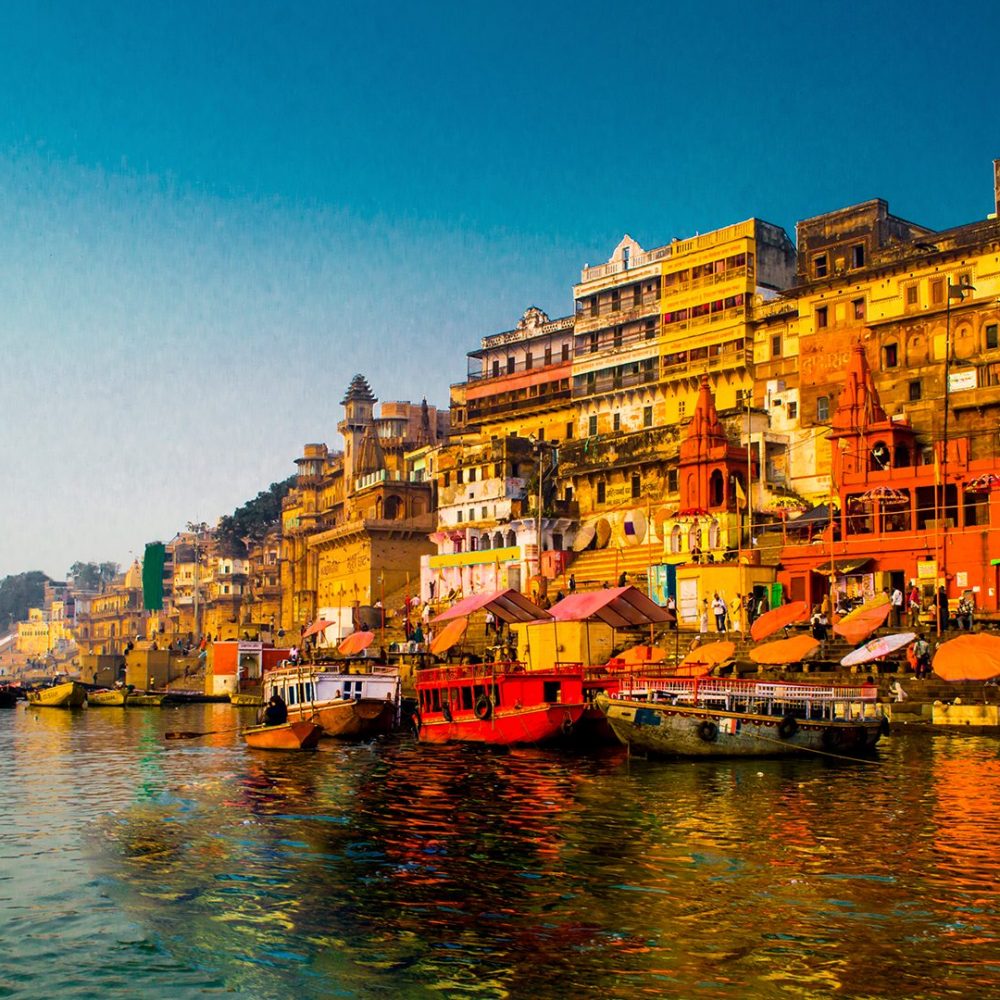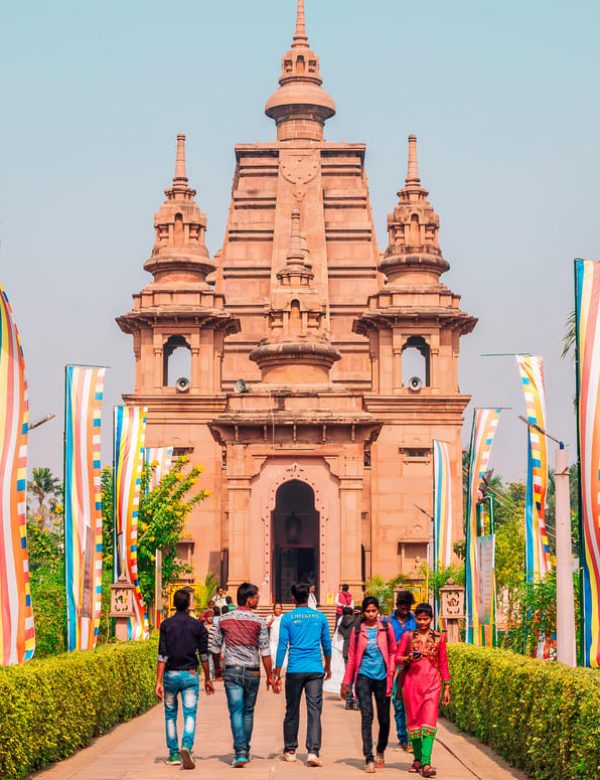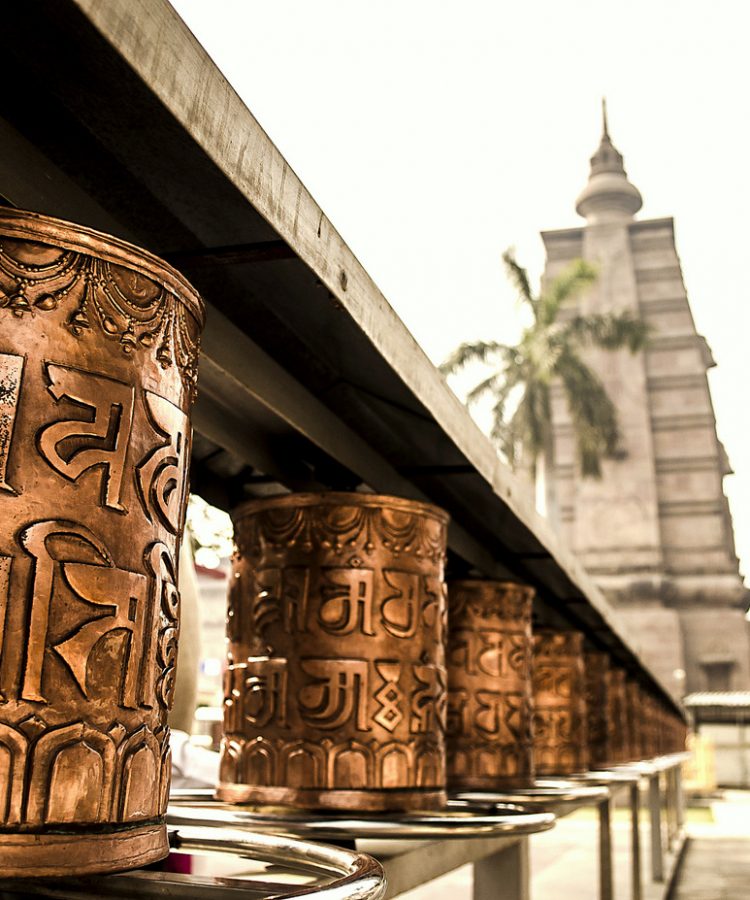HOLY CITY
KASHI THE CITY OF LORD SHIVA
Varanasi, (also known as Benares, Banaras, Kashi and Kasi) is a Hindu holy city on the banks of the Ganges River in the north Indian state of Uttar Pradesh. The name “Varanasi” is derived from the twin tributaries of Ganga Varuna and Asi, on whose shores the city stands.
Varanasi is the site of the holy shrine of Lord Kasi Viswanatha (a form of Lord Shiva) and is one of the revered 12 Jyotirlingas (linga of light). Along with its positional advantage on the banks of the sacred Ganges River, this has given Varanasi a place at the forefront of the Hindu religion. Varanasi is considered the most sacred place for all Hindus, irrespective of denomination.
Hindus have long believed that bathing in the Ganges or dying in the holy city of Varanasi circumvents reincarnation and hence provides a permanent place in the Swarg (Heaven). This belief that has encouraged the establishment of innumerable nearby geriatric homes and also the disposal of half-burnt corpses into the river.
varanasi ghats
Varanasi or Kashi is older than traditions. Varanasi presents a unique combination of physical, metaphysical and supernatural elements. According to the Hindu mythology, Varanasi liberates soul from human body to the ultimate. It is the Ganga Ghats of Varanasi that complement the concept of divinity. Ghats of Ganga are perhaps the holiest spots of Varanasi. The Ganga Ghats at Varanasi are full of pilgrims who flock to the place to take a dip in the holy Ganges, which is believed to absolve one from all sins.
There are number of temples on the bank of the Ganga River in Varanasi. It is believed that people are cleansed physically, mentally and spiritually at Ganga Ghats. It is at the Ganga Ghats where we see life and death together. For thousands of years people have been thronging these Ghats to offer their morning prayers to the rising sun. There are more than 100 ghats along side Ganga in Varanasi. Some of the prominent and popular Ghats at Varanasi are the Dasaswamedh Ghat, Manikarnika Ghat, Harischandra Ghat, Kabir Ghat and Assi Ghat.

Pilgrimage in varanasi

Kashi Vishwanath Temple and Gyanvapi Mosque
Dedicated to Lord Shiva, the temple has earned the name of Golden Temple due to the gold plating done using one ton of gold donated by Maharaja Ranjit Singh on its 15.5-m high spire.
St. Mary’s Church
Situated in the cantonment area of Varanasi, the architectural peculiarity that distinguishes St. Mary’s Church from others are its louvered doors and hooded ventilation.
Durga Temple
The 8th century Durga temple is built in Nagara Style and is one of the most important temples of the city. The ‘shikhara’ of the temple consists of several small spires layered one on top of the other.
Bharat Mata Temple
Dedicated to Mother India, it is situated in Mahatma Gandhi Kashi Vidyapeeth. It was built by Babu Shiv Prasad Gupt and inaugurated by Mahatma Gandhi in 1936.
Tulsi Manas Temple:
Dedicated to Lord Rama, this temple is said to be built on the site where Goswami Tulsidas wrote the epic ‘Ramacharitramanas’. It was built in 1964 by a philanthropist family.
Educational Institutes in Varanasi
For centuries, Varanasi is reputed as a great center of education and learning. Varanasi is also called as “Sarva Vidya Ki Rajdhani” (capital of knowledge). Since ancient times people, from all parts of the world, have been coming to Varanasi to learn philosophy, Sanskrit, astrology, modern sciences and social science.
The first step in the direction of establishing formal educational institute in Varanasi goes back to 1791, when a Sanskrit college was started to train the servants of the East India Company.
Mrs. Annie Besant established the Central Hindu School in the last quarter of the 19th century with the aim of imparting modern as well traditional education. The Central Hindu School formed the core of the Benaras Hindu University. Besides the Banaras Hindu University, other educational institutions of repute are the Sampurnanad Sanskrit University, Mahatma Gandhi Kashi Vidya Peeth, U P College and Central Institute of Tibetan Studies

Muths & Ashrams at Varanasi

The art and culture of Varanasi is unique. It is the rich cultural tradition of Varanasi that makes it the cultural capital of India. A combination of archaeology, mythology, geography, art and history makes Varanasi a great center of Indian culture.
Varanasi presents a complete museum of Indian art and culture. At Varanasi one can feel the changing patterns and movements in course of history. It has a rich and unique style of art forms and folk art. For centuries, Varanasi has produced master craftsmen and earned name and fame for its beautiful Sarees, handicrafts, textiles, toys, ornaments, metal work, clay and woodwork and other crafts.
Since ancient times, Varanasi has been the Capital of all knowledge (sarva Vidya ki Rajdhani). Varanasi has produced numerous famous scholars and intellectuals, who have left their mark in respective fields of activity.Varanasi presents a unique social and cultural fabric. Cultural and linguist pluralism and various ethnic groups are so very eternal to the holy city, Varanasi. There is another interesting facet to Varanasi, where one gets to enjoy Benarasi pans, Thandai, Gamcha, Bahri Alang and Mauj Masti.
Art & Culture of Varanasi
For centuries, Varanasi is reputed as a great center of education and learning. Varanasi is also called as “Sarva Vidya Ki Rajdhani” (capital of knowledge). Since ancient times people, from all parts of the world, have been coming to Varanasi to learn philosophy, Sanskrit, astrology, modern sciences and social science.
The first step in the direction of establishing formal educational institute in Varanasi goes back to 1791, when a Sanskrit college was started to train the servants of the East India Company.
Mrs. Annie Besant established the Central Hindu School in the last quarter of the 19th century with the aim of imparting modern as well traditional education. The Central Hindu School formed the core of the Benaras Hindu University. Besides the Banaras Hindu University, other educational institutions of repute are the Sampurnanad Sanskrit University, Mahatma Gandhi Kashi Vidya Peeth, U P College and Central Institute of Tibetan Studies

Varanasi Sarnath

Sarnath, about 10 km from the holy city of Varanasi, is the place where Buddha chose to deliver his first sermon. The celebrated Mantra, ‘Buddham Sharanam Gachhami’, owes its origin to Sarnath. On the day before his death Buddha included Sarnath along with Lumbini, Bodh Gaya and Kushinagar as the four places he thought to be sacred to his followers. It makes Sarnath one of the most venerated Buddhist places. Besides Buddhism, Sarnath is also connected with Jainism
There are many Buddhist monuments and edifices in Sarnath. Some of the important Buddhist monuments at Sarnath are the Dhamekha stupa, the Chaukhandi stupa and monasteries and temples of different schools of Buddhism from Japan, China, Thailand, Burma and others.
There is also a vast expanse of ancient ruins at Sarnath. Several Buddhist structures were raised at Sarnath between the 3rd century BC and the 11th century AD, and today it presents the most expansive ruins amongst places on the Buddhist trail. The Ashoka pillar of Sarnath is the National emblem of India.
